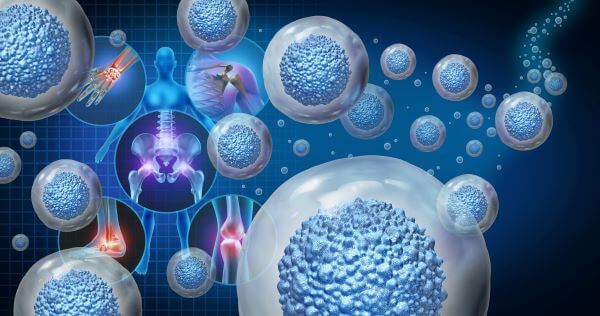
Embryonic stem cells are pluripotent cells derived from a 3 – 5 day old human embryo. They have the unique potential to develop into any of the other 200+ human cell types, and can significantly further our understanding of human development and diseases.
Embryonic stem cells also have important applications in drug development, and may one day be used to treat currently incurable conditions.

What Are Stem Cells?
Stem cells are cells that have the potential to differentiate and give rise to other types of body cells. They are the basic materials from which all of the body’s specialized cells are made during whole-body development and, in adulthood, are used to maintain and repair body tissues. There are two types of human stem cells, and these are embryonic stem cells and adult stem cells.
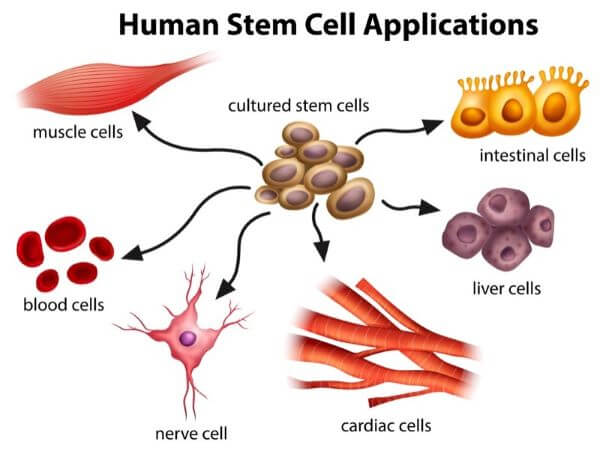
What Are Embryonic Stem Cells?
Embryonic stem cells (ESCs) are stem cells derived from a 3 – 5 day old human embryo (AKA a blastocyst). ESCs are pluripotent, meaning they have the potential to become any of the other 200+ types of cells found in the human body. As the embryo develops, ESCs divide and differentiate to form the full complement of human body cells required for healthy function.
The first differentiation event in human embryos begins around 5 days after fertilization, so ESCs must be harvested before this time if they are to be used in medicine and research. At this early developmental stage, the cells of the embryo form an undifferentiated mass and have not yet taken on the characteristics or functions of specialized adult cells.

The Importance of Embryonic Stem Cells
The ability of ESCs to develop into all other types of human cells makes them an invaluable research tool. Studies involving ESCs can advance our understanding of human development, disease treatment, and drug efficacy.
ESCs can be grown (or cultured) in a laboratory. When kept under the right conditions, stem cells will grow and divide indefinitely, without becoming differentiated. However, they will still maintain their ability to differentiate, making the ESC culture a convenient and renewable reservoir of human cells. When used in research, ECSs are converted into their desired cell types by manipulating the culture conditions.
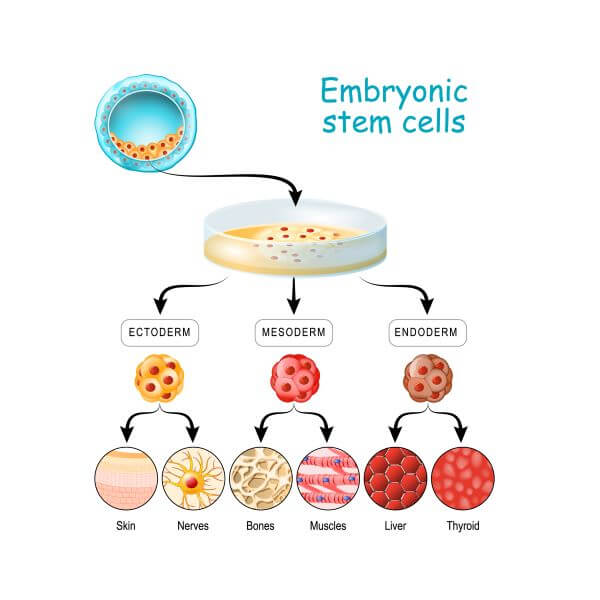
Uses for Embryonic Stem Cells
Scientific Research
Scientists can use stem cells to further their understanding of human development and diseases. By studying embryonic stem cells, researchers hope to learn how they differentiate to form tissues and organs, how diseases and conditions develop in these tissues, and how age affects their function.
Scientists can also use ESCs to test and develop new drugs and to help them identify new potential treatments for diseases like Parkinson’s disease, heart failure, and spinal cord injuries.
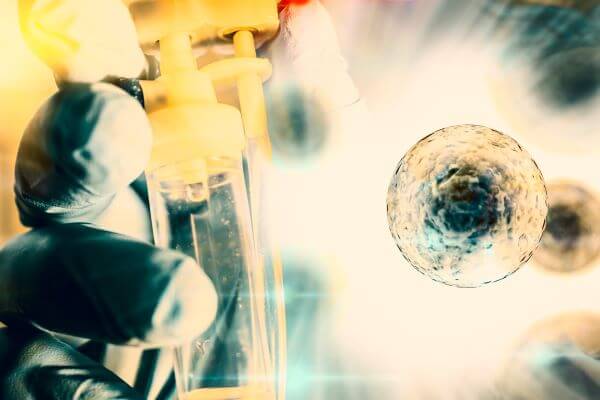
Treatment of Diseases
ESCs have enormous potential in the development of restorative or regenerative medicine, in which damaged tissues are replaced by healthy ones. Currently, several stem cell therapies are possible and could be used to treat a variety of injuries and diseases. These include spinal cord injuries, retinal and macular degeneration, heart failure, type 1 diabetes, and tendon rupture.
However, research into the use of ESCs for regenerative medicine are ongoing, and better understanding is required before modern medicine can harness their full potential. In the future, scientists hope that stem cell therapies can be used to treat currently incurable or difficult to treat conditions, such as AIDS or certain types of cancer.
Currently, the most common stem cell therapy is multipotent hematopoietic stem cell (HSC) transplantation. This treatment involves the transplantation of hematopoietic (or blood) stem cells and is usually used to treat diseases affecting the blood cells, such as leukemia and anemia.
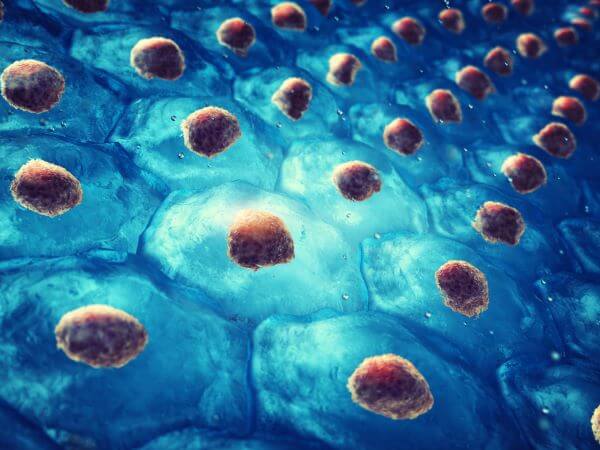
Drug Development
ESCs can also be used in the development of new drugs, which must be tested on living tissues to determine their efficacy and any possible side effects.
Stem cells cultured in the laboratory can be stimulated to differentiate into any type of human tissue, so they are commonly used in preclinical drug trials. Once the potential and risks of the new drug have been determined using stem cells, the treatment can be used in animal tests and, eventually, human clinical trials.
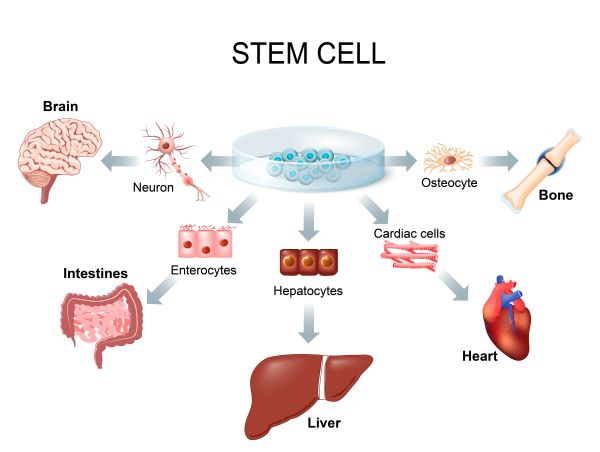
The Ethical Controversy Surrounding ESCs
The discovery of ESCs has led to numerous breakthroughs in the field of medical research, and their potential as the basis for new therapies and drugs is enormous. However, there is ethical controversy surrounding the use of ESCs in research, primarily because harvesting these cells involves destroying a human embryo.
For those who believe that life begins at conception, this raises moral objections. Opponents of stem cell research believe that embryos have the same rights as any other human beings, and shouldn’t be disposed of in the name of science.
Those who support the use of ESCs in medical research may argue that the embryos do not yet qualify as humans, as they are destroyed in the very early stages of development. ESCs are harvested at around day 5 of development when the embryo (or blastocyst) is nothing more than a mass of undifferentiated cells.
Embryos used as a source of ESCs are frequently obtained from IVF clinics, where they have been frozen following fertilization. Guidelines created by the National Institute of Health state that embryos can only be used for this purpose when they are no longer needed (meaning they will never be implanted in a woman’s uterus). Such embryos would eventually be discarded anyway, so it can be argued that they would be better used to advance medical research.
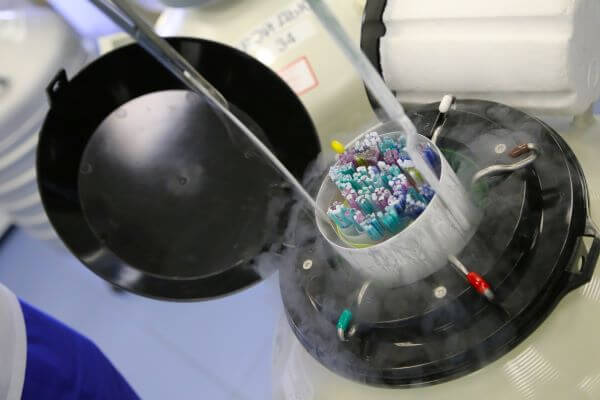
What Are Adult Stem Cells?
Adult stem cells (AKA somatic stem cells) are stem cells that are found in most adult tissues.
They can develop into other types of cells but, unlike, ESCs, they are not pluripotent (able to develop into any other type of cell). Adult stem cells are either multipotent (able to develop into a limited number of closely related cells) or unipotent (able to develop into just one type of cell).
Their main function is to maintain and repair the tissue in which they are found and to replace cells that die as a result of injury or disease.

Examples of Adult Stem Cells
Mesenchymal Stem Cells
Mesenchymal stem cells are found in many adult tissues, including the umbilical cord, bone marrow, and fat tissue. In the bone marrow, mesenchymal stem cells differentiate to form bone, cartilage, and fat cells.
Neural Stem Cells
Neural stem cells are found in the brain and develop into nerve cells and their supporting cells (glial cells).
Hematopoietic Stem Cells
Hematopoietic stem cells are found in the bone marrow and peripheral blood. They give rise to all kinds of blood cells, including red blood cells, white blood cells, and platelets.
Skin Stem Cells
Skin stem cells are found in the basal layer of the epidermis and form keratinocytes for the continuous regeneration of the epidermal layers.
